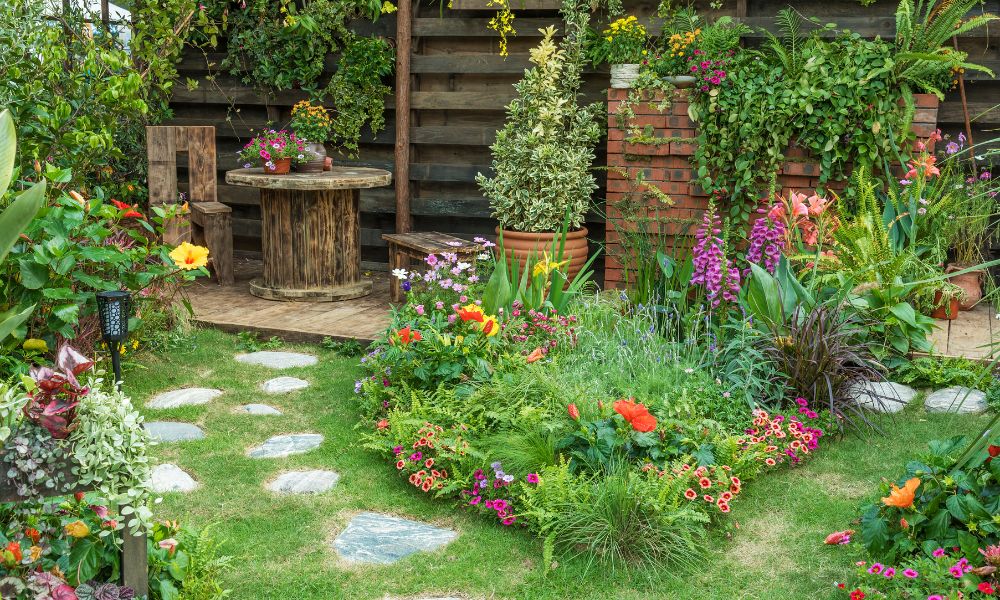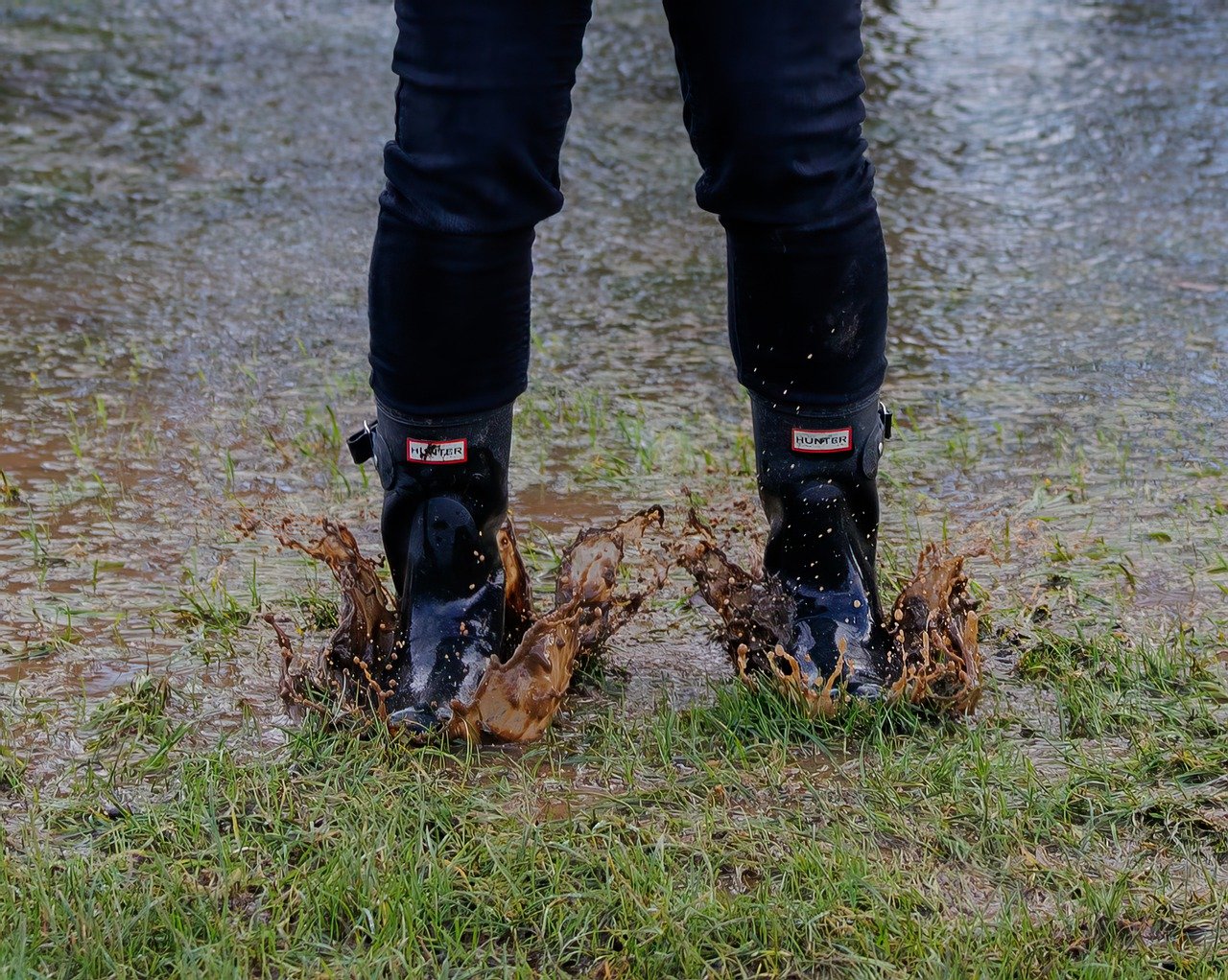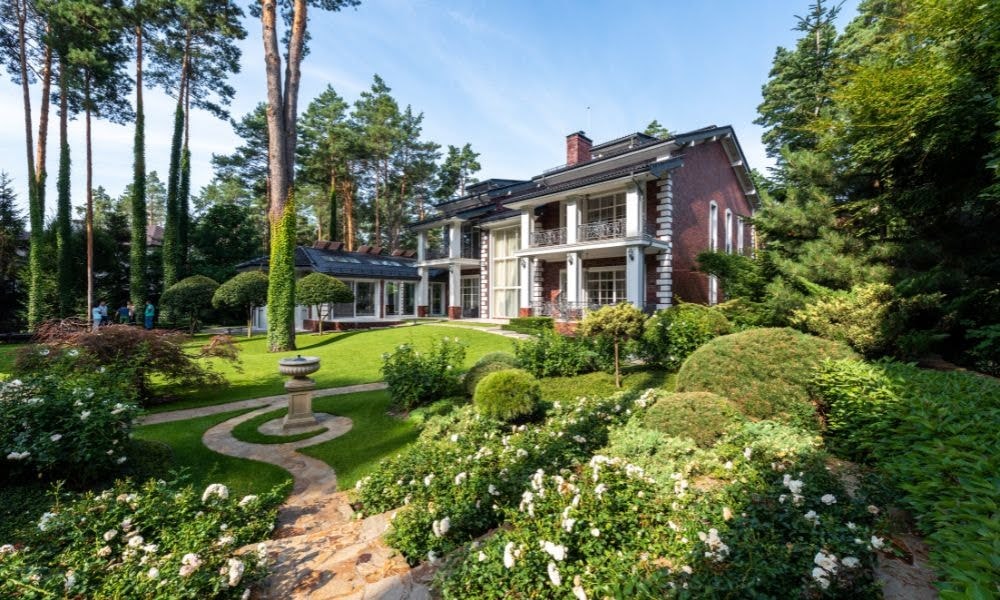Perennials are the life of any garden, bringing recurring beauty year after year with minimal effort. Unlike annuals, which complete their life cycle in a single season, perennial plants come back every spring, offering long-lasting growth and blooms. Many gardeners are drawn to them because they provide a reliable structure in flower beds, offering seasonal interest without the constant need for replanting.
Perennials can be mixed with colorful annuals to create variety, but the key benefit lies in the consistency of growth and bloom times. With proper planning, perennial gardens offer year-round interest, incorporating plants that thrive in full sun or partial shade, ensuring your garden looks vibrant from early spring through the fall season.
Planning Your Perennial Garden
A successful perennial garden starts with understanding your climate zone. Different plants thrive in different environments, and knowing your zone will guide you in choosing the right perennials for your garden. Climate zones dictate frost dates, bloom times, and the overall growing season, which are all important factors to consider when selecting plants.
In addition to climate, it’s essential to assess how much sunlight your garden gets throughout the day. Sun-loving plants like black-eyed Susans require full sun, while others, like forget-me-nots, thrive in partial shade.
The soil in your garden beds is another factor to consider. If you have clay soil, it’s important to amend it to ensure good drainage, as many perennials prefer well-draining conditions. With the right soil type and plant selection, you can create a perennial garden that provides year-round beauty.
Designing for Seasonal Appeal
Designing perennial gardens for year round beauty blends different elements that keep it looking lively in every season. By layering plants, incorporating textures, and using contrast, you can create visual depth and interest, even during the quieter months.
Creating Layers for Visual Depth
When designing your perennial beds, consider layering plants by height to create visual depth. Taller plants, such as tall phlox or joe pye weed, can serve as the backdrop, while shorter plants like coral bells or creeping phlox can fill the front. This approach not only adds structure but also ensures continuous blooms, as many perennials have different flowering times throughout the year.
Focal Points and Anchor Plants
Every garden benefits from focal points that draw attention. Anchor plants such as evergreen shrubs or tall perennials provide a sense of structure, making them an essential element of garden design. These plants often stay green throughout the year, offering winter interest when many perennials have gone dormant. By choosing evergreens strategically, you ensure that your garden retains its beauty through all seasons.
Incorporating Color Schemes
Playing with color schemes adds vibrancy to your garden. By selecting plants with staggered bloom times, you can maintain year-round color. Summer blooming perennials like black-eyed Susans or Russian sage add bright hues during the hottest months, while fall favorites like tall sedums bring deep reds and purples as temperatures cool down. For spring, delicate blooms like forget-me-nots can provide the first signs of life after the last frost date.
Using Texture and Contrast
Texture is just as important as color in garden design. Ornamental grasses, for example, bring a soft movement to the garden, contrasting with the more rigid structure of taller perennials. Mixing plants with fine foliage, like creeping phlox, with bold-leafed plants such as coral bells, adds contrast that keeps the garden visually interesting. This mix of textures helps break up the monotony and makes your flower beds feel dynamic throughout the growing season.
Combining Evergreen and Deciduous Plants
For a garden that offers year-round interest, combining evergreen and deciduous plants is key. Evergreen shrubs keep their foliage year-round, providing structure and color during the colder months. Deciduous plants, meanwhile, bring vibrant color in the spring and fall but lose their leaves in winter, creating a seasonal rhythm in the garden.
Enhance Your Garden with Hardscaping
Choosing Plants for Low Maintenance
When it comes to choosing plants for a low-maintenance perennial garden, focusing on drought-tolerant perennials is a smart place to start. These types of plants, such as Russian sage and tall sedums, thrive with minimal water, making them perfect for gardeners who want to conserve water or live in regions with hot, dry summers.
Alongside drought tolerance, deer-resistant varieties like butterfly weed or ornamental grasses can help prevent your hard work from becoming a buffet for local wildlife. Planting these types of perennials can save you the frustration of constant replanting and maintenance due to damage from deer.
Disease resistance is another important factor in reducing garden upkeep. Some plants are naturally resistant to common issues like powdery mildew or rust, meaning you won’t need to constantly treat them with chemicals or spend time nursing them back to health.
Planting Your Perennial Garden
When planting, it’s important to consider proper spacing. Giving plants room to grow not only ensures they reach their full potential but also prevents overcrowding, which can lead to competition for resources and even disease. Larger plants like joe pye weed or tall sedums will need more space to spread, while smaller plants like coral bells can be planted closer together.
Watering techniques also play a vital role in establishing perennials. Proper watering at the time of planting encourages deep root growth, which helps plants become more resilient over time. Many perennials, especially drought-tolerant plants, prefer less frequent but deep watering to encourage roots to seek moisture deep within the soil.
Caring for Perennials Throughout the Year
Maintaining a perennial garden requires attention to the changing seasons, but with a few seasonal care steps, your plants will thrive year-round. Each season brings its own set of tasks, from pruning and fertilizing in the spring to preparing your garden for winter dormancy.
- Spring Care: Start the growing season by pruning dead growth and dividing plants that have outgrown their space. Fertilizing during this time encourages strong new growth and sets the stage for a vibrant garden.
- Summer Care: During the hottest months, managing heat and drought becomes critical. Drought-tolerant perennials help, but regular watering and deadheading spent blooms will promote continuous flowering through summer.
- Fall Care: As the weather cools, prepare your plants for dormancy by cutting back faded perennials and adding compost or mulch to enrich the soil and protect roots through the colder months.
- Winter Care: In winter, protecting the roots of your perennials is key. While snow can act as a natural insulator, it’s a good idea to mulch around your plants to shield them from frost and harsh temperatures.
Preventing Common Perennial Garden Problems
Like any garden, perennial gardens face their share of challenges. Managing pests and diseases early on is key to preventing damage. Many gardeners opt for natural pest control methods, such as introducing beneficial insects or using organic sprays to keep unwanted visitors at bay. Choosing disease-resistant varieties, as mentioned earlier, is another proactive step in keeping problems to a minimum.
Soil erosion is another issue that some perennial gardens face, particularly in sloped areas. Ground covers like creeping phlox or taller plants with deep root systems can help stabilize the soil and reduce erosion over time. By addressing these common problems with proactive strategies, you can ensure that your perennial garden remains healthy and beautiful for years to come.
Enhancing Your Perennial Garden with Companion Plants
Companion planting is a technique that can enhance the overall health and beauty of your perennial garden. By selecting the right companion plants, you can promote better growth, reduce pests, and create a balanced ecosystem. Some plants, like butterfly weed, attract beneficial insects, while others, such as ornamental grasses, help deter pests naturally.
Ground covers like creeping phlox work well alongside taller perennials like joe pye weed, creating a balanced garden that reduces soil erosion and minimizes competition for resources. Choosing the right companion plants ensures a healthier, more self-sustaining garden that requires less intervention throughout the year.
Incorporating Hardscaping Elements
Hardscaping elements can elevate the design of your perennial garden, adding both structure and function. Paths and walkways not only create a practical route through your garden but also guide the eye, highlighting focal points or areas of interest. Gravel, brick, or stone paths can add a rustic charm or formal elegance, depending on the overall style of your garden.
In addition to walkways, garden edging and borders are another hardscaping feature that can help define your planting areas. Using stone, wood, or metal edging around your garden beds keeps soil and mulch in place, giving your garden a clean, well-maintained look.
Year-Round Perennial Garden Maintenance Checklist
Maintaining a perennial garden requires regular attention to ensure lasting beauty and health. Key tasks include pruning, watering, dividing plants, and adding compost or mulch to improve soil quality. Having essential tools like pruning shears, a sturdy spade, and a watering can makes these tasks easier to manage.
By following a consistent maintenance routine throughout the year, you can keep your perennial garden thriving with minimal effort. Setting a yearly schedule helps you stay organized and ensures that no essential care steps are overlooked.
Growing a Perennial Garden That Lasts
Creating and maintaining a perennial garden that brings beauty year-round is incredibly rewarding. By planning wisely, choosing the right plants, and giving them the care they need, you can enjoy a thriving, low-maintenance garden that enhances your outdoor space in every season.
Whether you’re layering plants for depth, incorporating hardscaping elements, or sticking to a simple maintenance routine, a little effort goes a long way. So, get out there and start building the perennial garden of your dreams—you’ve got this!






